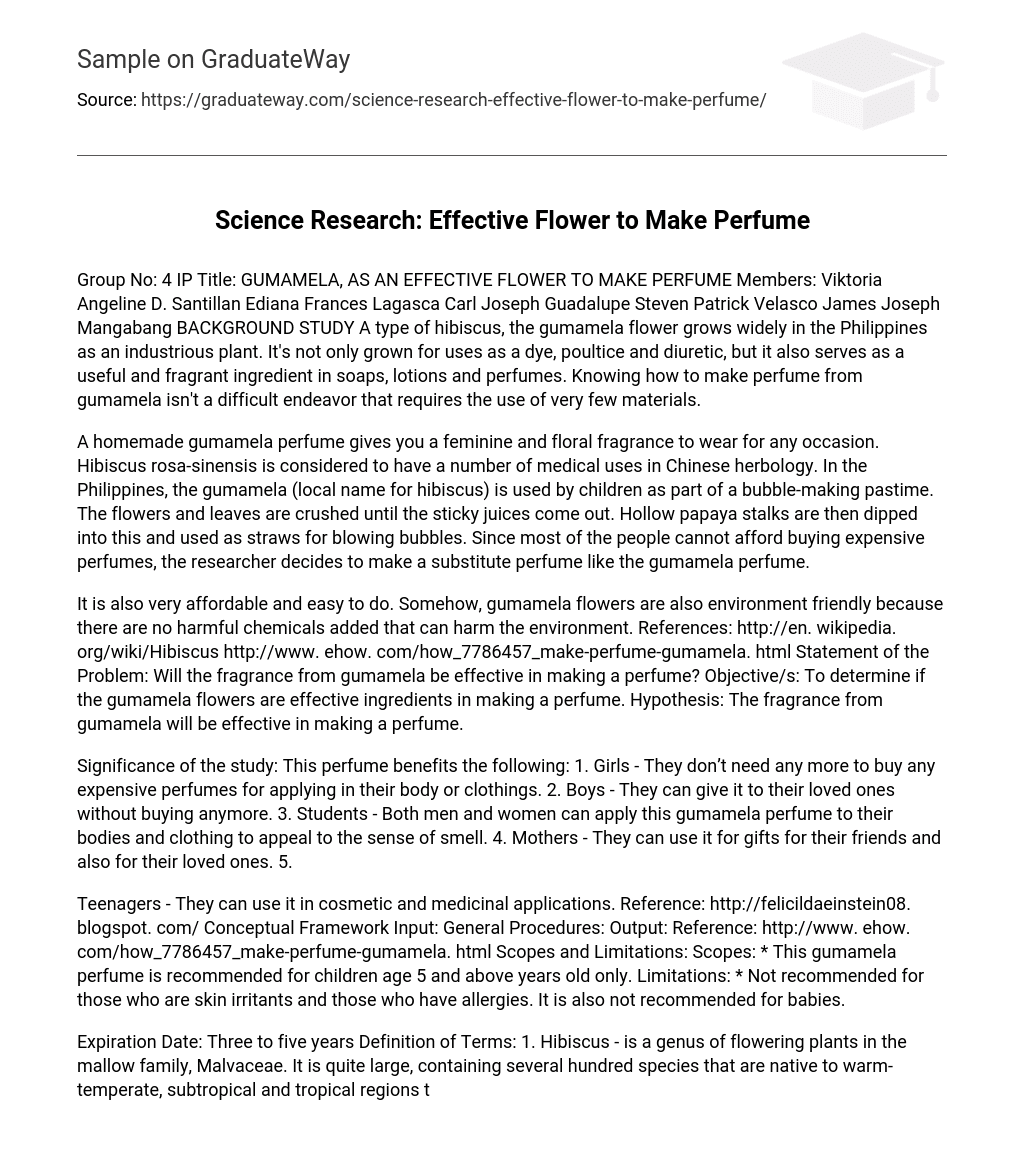A type of hibiscus, the gumamela flower grows widely in the Philippines as an industrious plant. It’s not only grown for uses as a dye, poultice and diuretic, but it also serves as a useful and fragrant ingredient in soaps, lotions and perfumes. Knowing how to make perfume from gumamela isn’t a difficult endeavor that requires the use of very few materials.
A homemade gumamela perfume gives you a feminine and floral fragrance to wear for any occasion. Hibiscus rosa-sinensis is considered to have a number of medical uses in Chinese herbology. In the Philippines, the gumamela (local name for hibiscus) is used by children as part of a bubble-making pastime. The flowers and leaves are crushed until the sticky juices come out. Hollow papaya stalks are then dipped into this and used as straws for blowing bubbles. Since most of the people cannot afford buying expensive perfumes, the researcher decides to make a substitute perfume like the gumamela perfume.
It is also very affordable and easy to do. Somehow, gumamela flowers are also environment friendly because there are no harmful chemicals added that can harm the environment.
Statement of the Problem: Will the fragrance from gumamela be effective in making a perfume? Objective/s: To determine if the gumamela flowers are effective ingredients in making a perfume. Hypothesis: The fragrance from gumamela will be effective in making a perfume.
Significance of the study: This perfume benefits the following:
- Girls – They don’t need any more to buy any expensive perfumes for applying in their body or clothings.
- Boys – They can give it to their loved ones without buying anymore.
- Students – Both men and women can apply this gumamela perfume to their bodies and clothing to appeal to the sense of smell.
- Mothers – They can use it for gifts for their friends and also for their loved ones.
- Teenagers – They can use it in cosmetic and medicinal applications.
Three to five years Definition of Terms:
- Hibiscus – is a genus of flowering plants in the mallow family, Malvaceae. It is quite large, containing several hundred species that are native to warm-temperate, subtropical and tropical regions throughout the world.
- Fragrant – from Latin fragrans, from fragrare to emit a smell. Provides a pleasant or sweet smell
- Poultice – also called cataplasm, is a soft moist mass, often heated and medicated, that is spread on cloth over the skin to treat an aching, inflamed, or painful part of the body.
- Perfumes – is a mixture of fragrant essential oils or aroma compounds, fixatives and solvents used to give the human body, animals, objects, and living spaces “a pleasant scent. ” The odoriferous compounds that make up a perfume can be manufactured synthetically or extracted from plant or animal sources.
- Hibiscus syriacus – is a widely cultivated ornamental shrub in the genus Hibiscus. Common names include Rose of Sharon (especially in North America), Shrub Althea, Rose Althea and St Joseph’s rod (Italy).
- Hibiscus rosa-sinensis – known colloquially as the Chinese hibiscus, China rose and shoe flower, is an evergreen flowering shrub native to East Asia. It is widely grown as an ornamental plant throughout the tropics and subtropics. The flowers are large, generally red in the original varieties, and firm, but generally lack any scent.
- Feminine – Having the qualities associated with a woman or the female gender; suitable to, or characteristic of, a woman.
- Floral Scent – a pleasant smell of perfume made from flowers
References
- http://www. wikipedia. org/ http://en. wiktionary. org
- http://www. merriam-webster. com





